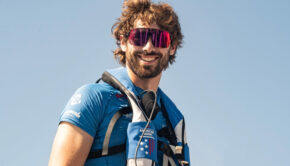AC72 Designers Offer Tips On What to Look For
Published on July 25th, 2013
It has been nearly a year since the first AC72 set sail, and these boats continue to amaze us. Here are what two of the America’s Cup design experts suggest we should be looking for…
Ian Burns (AUS), Design Team Coordinator, Oracle Team USA – 7th campaign
One is jib size. There are thresholds of jib sizes that are suited for certain conditions both upwind and downwind. A lot of the time, as we have already seen, the boats sail without the gennaker downwind. The smallest jib is not optimal in the strongest wind because of the gennaker crossover.
There is not a lot viewers can see above the water. The daggerboards are obviously quite different between all the boats. There are S shapes, L shapes, hard L’s, soft L’s, and everything in between. These are all different approaches for grappling with stability while flying. And, there are light air and heavy air variations with the boards. If you can see the boards during launch, you might get an indication of the weather each team is expecting.
Pete Melvin (USA), Design/NA for Emirates Team New Zealand – 3rd campaign
Stability while foiling continues to be a major thrust for teams in this AC. While teams can now sustain reasonably stable flight in a straight line, look for how stable a boat is during mark roundings and how aggressive they can be sustaining foiling through gybes without becoming unstable. Instabilities can be in the form of pitch, heel, leeway, and heave (vertical height) – so there are now more dimensions for the sailors to try and control than for a boat that does not foil.
Above a certain windspeed, we are seeing the boats sail around the course without a gennaker or Code 0 sail. This is because the boats are fast enough that the apparent wind is well forward while sailing downwind. The downwind apparent wind angles are not much deeper than the upwind angles. Once you are foiling at speed, a larger sail creates unneeded power and excess drag. Sailing with just a wing and jib downwind saves valuable human power resources since you do not have to hoist and drop sails at mark roundings, or gybe downwind headsails around the forestay. Watch for where each team determines that crossover.
Daggerboards, rudders, and elevators (a.k.a. “foils”) are an ongoing research and development project at all the teams. Design concepts seem to be converging but subtle differences will be important on race day. Most teams will likely have daggerboards with inward and upward angled tips. More up angle equals more heave stability, but also more drag and teams will chose what they feel is the best compromise based on the forecast for the day.








 We’ll keep your information safe.
We’ll keep your information safe.